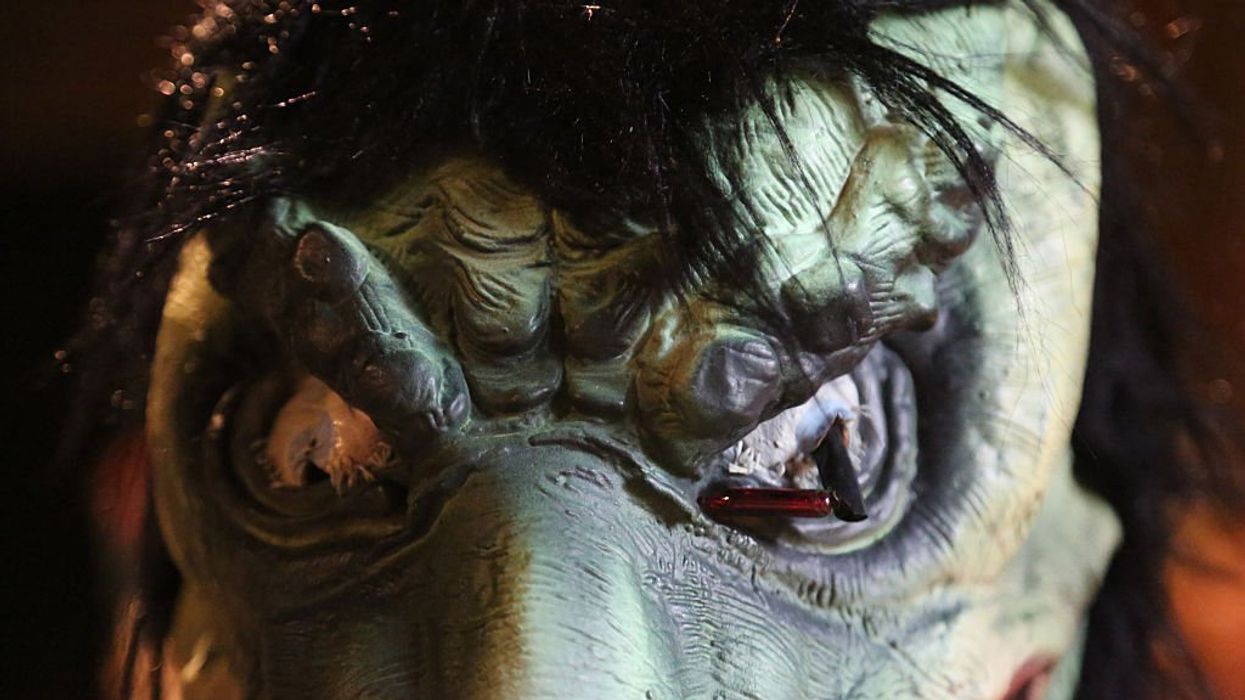
Tracy Glantz/The State/Tribune News Service via Getty Images

The academics suggest in a new paper that the existence of cryptoterrestrials should 'not be summarily dismissed.'
The Department of Defense's All-Domain Anomaly Resolution Office defines "Unidentified Anomalous Phenomena" (UAP) as:
(A) airborne objects that are not immediately identifiable; (B) transmedium objects or devices; (C) and submerged objects or devices that are not immediately identifiable and that display behavior or performance characteristics suggesting that the objects or devices may be related to the objects or devices described in subparagraph (A) or (B).
The Pentagon regards UAP as "sources of anomalous detections in one or more domain ... that are not yet attributable to known actors and that demonstrate behaviors that are not readily understood by sensors or observers."
The dominant hypotheses for these phenomena are either that they are the work of extraterrestrials from distant worlds and civilizations, or that they were simply fashioned by human beings.
A paper set to be published in the academic journal Philosophy and Cosmology recommends that scientists keep an open mind about a possible third option: that UAP could be the product of nonhuman intelligent beings (NHI) "concealed in stealth here on Earth (e.g., underground), and/or its near environs (e.g., the moon), and/or even 'walking among us' (e.g., passing as humans)."
In other words, academics are entertaining the possibility that flying saucers might not be the work of little green men from Mars but rather by "cryptoterrestrials": lizard people, stranded aliens, fairies, advanced cave dwellers, or residents of the dark side of the moon.
According to Tim Lomas and Brendan Case of Harvard University's Human Flourishing Program, and biological anthropologist Michael Masters of Montana Technological University, scientists should not dismiss the "cryptoterrestrial" hypothesis (CTH) outright.
"We recognize these CTHs may rightly be regarded skeptically by most scientists, but argue they nevertheless should not be ruled out, and deserve consideration in a spirit of epistemic humility and openness," they wrote.
The trio indicated they were inclined to pursue the topic after philosopher Bernado Kastrup's recent dismissal of the hypothesis over its "outlandish, unlikely, and 'far out' nature."
Their paper — a hodgepodge of references to local myths, alleged archeological discoveries, believers' anecdotes, questions raised by lawmakers, science fiction, and statements by military officials — raised five considerations: limits to historical and geological knowledge; traces of lost civilizations; supposed traces of underground civilizations; traditions around "magical" cryptoterrestrials; and UAP activity underground, underwater, and near the moon.
'We personally would have rated the possibility of a CTH having some basis in truth as low as 1%.'
The researchers stressed at the outset that this particular theory is distinct from the notion that UAP are the work of inter-dimensional beings. Instead, so-called cryptoterrestrials are understood to be physically present within current standard spacetime dimensions, even if "hidden" from view.
Possible candidates for cryptoterrestrials apparently include "dinosauroids."
"Across cultures are legends for instance of anthropomorphic reptilian races, such as the Nagas, a semi-divine species of half-human, half-serpent beings thought to reside in Patala (a netherworld), venerated in Hinduism and Buddhism. Moreover, palaeontologists have even speculated whether such creatures could possibly have evolved from known zoological origins," wrote the Harvard academics.
The researchers cited the suggestion that an anthropomorphic dinosaur called a troodon survived the mass extinction event 65 million years ago and now lurks underground. The troodon or some other "terrestrial animal which evolved to live in stealth," they intimated, could be that which former CIA agent John Ramirez apparently believes is "crawling all over the earth" with the knowledge of the U.S. government, the National Reconnaissance Office in particular.
Noting the perception of an absence of visible means of propulsion or sources of exhaust in various alleged sightings, the researchers raised the possibility, again noncommittally, that cryptoterrestrials could instead be magical beings, such as angels or "fairies, elves, gnomes, brownies, trolls, and the like."
If not lizard people or fairy folk, then there are two other possibilities, according to the paper: remnants of lost human civilizations or "extraterrestrial aliens or our intertemporal descendants who 'arrived' on Earth from elsewhere in the cosmos or from the human future, respectively, and concealed themselves in stealth."
The paper — released online one year after Gallup revealed that Americans' confidence in high education had fallen to 36% — notes that the primary locales where NHI have been alleged to hide out are Antarctica; Dulce, New Mexico; deep in the oceans; and on the dark side of the moon. Volcanoes, such as the Popocatepetl volcano in central Mexico, are also apparently possible headquarters if not portals.
The researchers admitted in their conclusion that all four hypotheses "are far-fetched on their face; we entertain them here because some aspects of UAP are strange enough that they call for unconventional explanations."
The trio noted that whereas in past years, "We personally would have rated the possibility of a CTH having some basis in truth as low as 1%," they would now put it at around 10%.
"Indeed, this is a fitting summary of the CTH: it may be exceedingly improbable, but hopefully this paper has shown it should nevertheless be kept on the table as we seek to understand the ongoing empirical mystery of UAP," continued the researchers. "This point was made in a recent article in Scientific American, for example, titled 'It’s time to hear from social scientists about UFOs.'"
Although accepted for publication, the paper has not yet been peer-reviewed.
Like Blaze News? Bypass the censors, sign up for our newsletters, and get stories like this direct to your inbox. Sign up here!